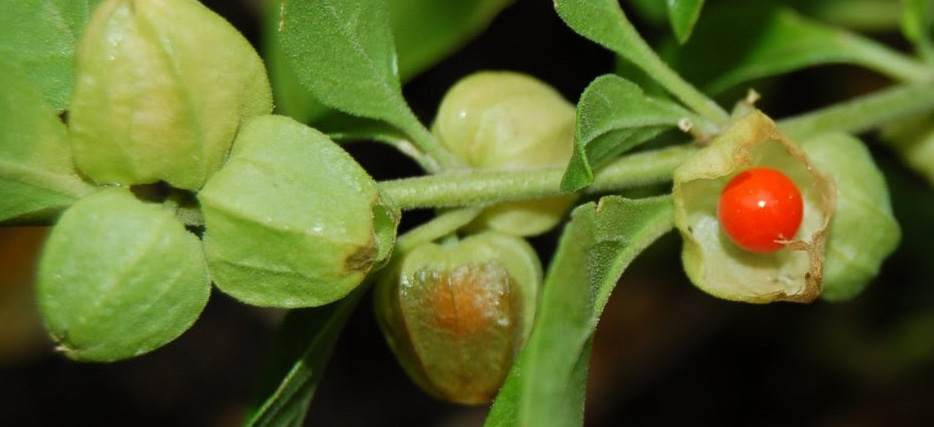
Ashwagandha
Ashwagandha (Withania somnifera) is an evergreen shrub that is part of the Solanaceae or nightshade family. Common names include Winter Cherry, Indian Ginseng, and Poison Gooseberry.
The word “Ashwagandha” is Sanskrit for “the smell of the horse”. While that may not sound appetizing, the roots do smell a little horsey! However, the name also derives from its reputed ability to give the user strength and virility. Interestingly, the Latin translation for the botanical name, somnifera, is ‘sleep-inducing’ and the herb does aid sleep.
While Ashwagandha has been used for thousands of years in India and surrounding regions, it is increasingly popular with western individuals searching for natural ways to stay healthy and happy.
[lwptoc]The History of Ashwagandha
Ashwagandha is revered in India, and remedies made from the root have been an integral part of Ayurvedic medicine since circa 6,000 BC. It is classed as a Rasayana which means it is used to rejuvenate, restore health, and promote longevity and overall physical and emotional well-being.
It is also used to improve hormonal function and memory, as a detoxifying/purifying agent, an aphrodisiac, an antiparasitic, and a diuretic and as a general tonic and as an adaptogen that combats the effects of stress and aids sleep. In some forms, it can be applied topically to bites and stings and to improve and maintain joint health. The fine root powder was and is often mixed with water, honey, or ghee (clarified butter).
Where This Plant is Found
This shrub is native to the drier regions of the Indian subcontinent (India, Sri Lanka, and Pakistan), Northern Africa, the Mediterranean, and parts of the Middle East.
Due to its increasing popularity and use, you will now find Ashwagandha growing wild and in gardens in countries around the world – including the US – where the climate is temperate. It is also cultivated in several countries including China, Yemen, and Nepal.
Related: The Complete Map of Edible Plants: Find Out What You Have in Your Area! (Video)
How to Identify Ashwagandha
Ashwagandha is an evergreen, woody perennial shrub that only reaches approximately 3.3 – 4.9 feet / 1 – 1 ½ meter in height and 1.65 – 3 feet / ½ – 1 meter in width. It is described as a pungent-smelling and compact plant. A distinguishing feature is that the entire plant is covered in short and extremely fine silver-grey hairs.
- Stems: the stems or stalks are green to brownish and the lower portion may be leafless.

- Leaf: The leaves are oval, velvety, and smell like green tomatoes. The tops are smooth and dark green whereas the underside is hairy and lighter in color. Leaves reach 7 centimeters / 2 ¾ inches long and 4 ½ centimeters / 1 ¾ inches wide.
- Flower: The flowers are small and pale green. They are bell-shaped but open into a five-petaled star shape. Each cluster of up to 7 flowers forms at a leaf node rather than at the end of a stem or stalk.
 Root: Ashwagandha roots are similar in shape to carrots and ginger. They are thick and fleshy and can reach lengths of up the 12 inches or 30 centimeters. Each main root has multiple, smaller lateral roots.
Root: Ashwagandha roots are similar in shape to carrots and ginger. They are thick and fleshy and can reach lengths of up the 12 inches or 30 centimeters. Each main root has multiple, smaller lateral roots.- Fruit: The berries are small (5 – 8 millimeters / 0.2 – 0.3 inches) in diameter, red, and round. Each berry is surrounded by a papery calyx which turns brown as it matures and as the berry ripens.
- Seeds: The seeds are small, brown, kidney-shaped, and have a rough surface.
How to Grow Ashwagandha
Ashwagandha prefers warm, even hot, weather. However, it will grow elsewhere if it is planted in full sun and in a sheltered location. You will need to cover the plant in the winter months to protect it from the cold. The soil can be acid, neutral, or alkaline, and sandy, loamy, or even clay, but it must be well-drained. It can be grown indoors. In terms of growing this shrub, you could either purchase a seedling or young plant or propagate from seeds if you have some that you have harvested.
Seeds don’t need to be pretreated with either cold or heat and can be planted as-is. Simply scatter them onto the surface and then cover them with a light layer of soil and gently pat down. Keep the seeds warm and moist until they germinate; this usually takes 3 – 6 weeks. They will also need light to grow.
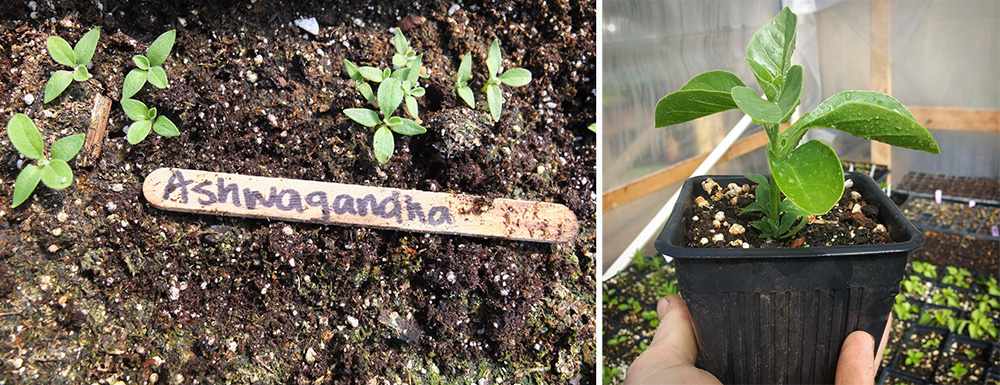
You can separate and plant out the seedlings into pots when they are large enough. After the frosts are over, the young Ashwagandha plants can then be transplanted into your garden.
Like all plants, this one is prone to some pests and diseases: leaf spot, treehoppers, red spider mites, and mealybugs. Each will be dealt with differently and both natural and chemical options are available.
Related: 10 Plants That You Should Never Plant Together (Video)
How to Harvest This Plant
Ashwagandha fruit is not edible, and the leaves are rarely used. The part of this medicinal herb that is harvested, processed, and used is the root.
The climate will impact when you harvest. If you live in a region with a warmer climate, you can harvest in the second or third year of the plant’s growth. In colder regions, the root is usually dug up at the end of the growing season in the first year.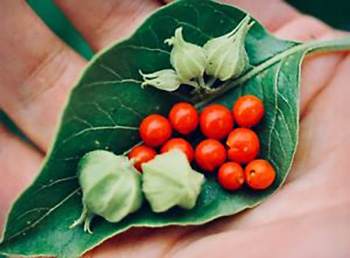
Dig straight down around the plant so that you don’t damage the main roots. Preferably, you should remove the entire root bowl rather than breaking roots off. Loosening or wetting the earth around them before lifting the plant out can be helpful.
Once they have been unearthed, wash them thoroughly to remove all the soil and other debris. You may find that the smell of the wet roots is a little overwhelming. You could take some comfort from the belief that the stronger the smell, the more potent the root! The root should be chopped up and powdered as soon as possible because the plant material becomes extremely hard when it is 100% dry. This makes it almost impossible to grind to a powder.
What is Ashwagandha Good For?
As previously indicated, the primary use of this medicinal plant is as an adaptogen. In other words, the active ingredients allow the mind and body to deal with stress and its impact on cells, organs, and systems. Ashwagandha strengthens and boosts physical and emotional resilience. As a result, it has been used for millennia to:
 Reduce anxiety and cortisol levels
Reduce anxiety and cortisol levels- Ease depression
- Treat fatigue
- Eliminate or reduce oxidation
- Improve stamina
- Reduce inflammation-related pain
- Boost memory and recall
- Protect against stress-induced gastric conditions such as ulcers
- Lower blood pressure and cholesterol levels
- Reduce cell growth in certain types of cancer
- Protect against neurodegenerative diseases such as Alzheimer’s and Parkinson’s
- Reduce blood sugar levels
- Increase testosterone and male fertility
- Boost muscle mass.
While there is a great weight of anecdotal evidence, there is virtually no clinical evidence of this plant’s medicinal efficacy. However, recent research has produced interesting and encouraging early findings.
What Parts of The Plant Are Used And What Remedies Are Available?
As mentioned, the leaves are infrequently used as they are very bitter, and the berries are never used. That leaves the root which contains all the valuable therapeutic active ingredients.
For those who wish to include Ashwagandha in their wellness routine, there are a few options when it comes to using this plant:
- The powder which is available in loose form or in capsules
- Liquids such as tinctures
- Tea that is loose or in bags.
Which form you opt to use depends on what you want it for. On balance, the powder is the most popular and versatile form. If you are unsure which option is best for you, consult your healthcare practitioner.
DIY Ashwagandha Recipe
An excellent way to obtain the benefits of Ashwagandha using an easy-to-make recipe is by making a hot drink that some refer to as “Moon Milk” as it helps you to sleep restfully and to boost your overall well-being.
Ingredients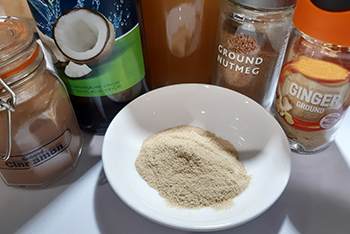
- 1 cup of milk (nut, soy, or animal milk)
- ½ teaspoon of Ashwagandha powder
- 1 pinch of ground nutmeg
- ½ teaspoon of ground cinnamon
- 1 teaspoon coconut oil
Optional:
- ¼ teaspoon powdered ginger
- 1 teaspoon honey or syrup
Method
-
-
- Pour the milk into a small pot or saucepan
- Use low heat and bring the milk to a simmer. Don’t allow it to boil
- Add the Ashwagandha, cinnamon, and nutmeg (and ginger if you want to)

- Whisk the ingredients gently but thoroughly into the milk

- Leave to simmer for a further 5 minutes
- Add the coconut oil and whisk it in well

- Add the honey or syrup if you wish to.

-
If you want to, you can use other spices in addition to or instead of those in this recipe such as vanilla, cloves, cardamom. This drink is best consumed about an hour before you go to bed and can be drunk daily or several times a week.
Dosage
As with any medicinal preparation or substance, the dose is affected by a range of both general and specific factors such as age, state of health, current treatments, and why you want to take Ashwagandha.
Due to the lack of clinical studies, there are no set or standard recommended doses as such. As a result, you are strongly advised to follow the directions on the product packaging and/or be guided by your healthcare practitioner. Strange as it seems, one can overdose on natural products.
How to Preserve This Plant
If you are harvesting the roots you need to clean and then process the material immediately. If you don’t, the roots become extremely hard almost overnight.
You can store larger pieces for use in teas or tinctures or grind the root into fine powder once the root is completely dry. Regardless of the form it takes, the root material must be stored in airtight containers or there is a risk of the pieces may become moldy. It’s not necessary to refrigerate it but you can if you want to do so.
Dried, correctly stored Ashwagandha will last up to a year.
Related: How To Properly Dry Plants for Medicine
What Plants Resemble Ashwagandha?
There are several members of the Withania genus that are similar to Ashwagandha. However, the primary plant that is alike, used in Ayurvedic medicine, and processed commercially is Withania coagulans.
This plant is also known as Indian Rennet, Indian Cheese Maker, or Vegetable Rennet and is literally used in cheese production. It’s also considered effective against inflammation, stress-related problems, and diabetes, and is used as a tonic.
While there are similarities, there are also differences:
| Feature | Ashwagandha (withania somnifera) | Withania coagulans |
| Size | 3.3 – 4.9 feet / 1 – 1 ½ meter in height | 1 – 3.3 feet / 0.3 - 1 meter high |
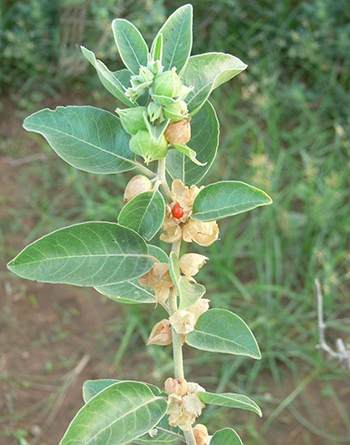 |
 |
|
| Stalks | Green to brownish and covered in soft, short, white hairs | Covered with thick grey or yellow-white hairs |
| Roots | Thick, fleshy, and can grow to 30 centimeters / 12 inches long | Fleshy and can reach 7.8 inches / 20 centimeters |
| Leaves | Oval and taper to a point; smooth on the top and the underside is hairy and lighter in color | Oblong and furry on both sides; the same green on both sides of the leaf |
| Flowers | Small, pale green, bell-shaped and open into a star with 5, single stamens | Small, green, oblong, and open into a star with marked crown-like stamens |
 |
 |
|
| Fruit | Small, round, red berries surrounded by a papery calyx which darkens to brown | Small, round, yellow berries surrounded by a strong, membranous calyx |
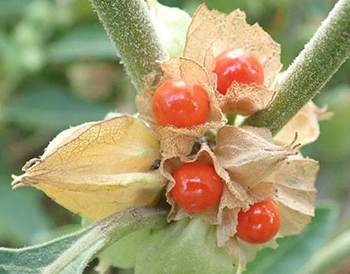 |
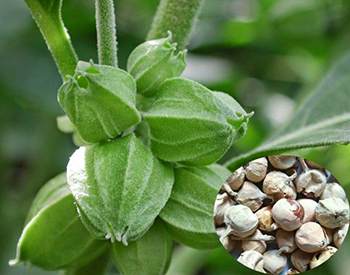 |
If you are purchasing plant material, make sure you do so from a reliable source. Don’t harvest plants unless you are sure you have identified them correctly. If you are unsure, ask an expert, or don’t ingest it!
Warning And Cautions
As with any substance you add to your health program, even natural / plant-based ones, you need to exercise caution. The following should be kept in mind in relation to Ashwagandha:
- Pregnant and breastfeeding women should not use this plant.
- Patients with:
- Autoimmune disease
- Type 1 diabetes
- Thyroid disease
- Gastric ulcers
should not take Ashwagandha.
Individuals taking medication to:
-
-
- Regulate blood sugar levels
- Suppress the immune system
- Regulate or affect thyroid levels
- Regulate high or low blood pressure
-
should not take Ashwagandha.
You may also like:
 Just like Xanax, the Anxiety Relieving Plant That Grows in Your Backyard
Just like Xanax, the Anxiety Relieving Plant That Grows in Your Backyard
Erratic Blood Sugar? Never Eat This Veggie (Video)
5 Calming Herbs to Soothe Anxiety
Vervain: The Medicinal Plant that Should be Part of Your Apothecary


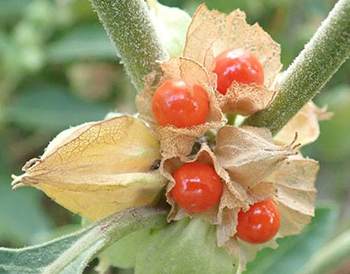 Root: Ashwagandha roots are similar in shape to carrots and ginger. They are thick and fleshy and can reach lengths of up the 12 inches or 30 centimeters. Each main root has multiple, smaller lateral roots.
Root: Ashwagandha roots are similar in shape to carrots and ginger. They are thick and fleshy and can reach lengths of up the 12 inches or 30 centimeters. Each main root has multiple, smaller lateral roots.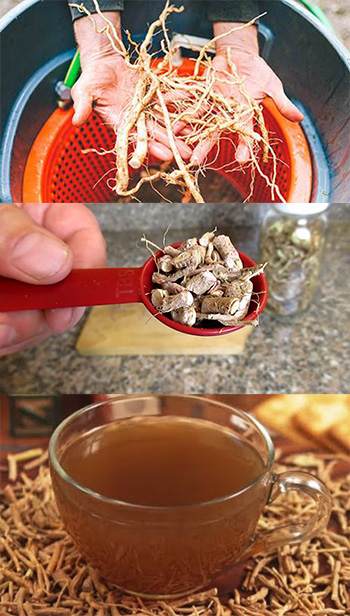 Reduce anxiety and cortisol levels
Reduce anxiety and cortisol levels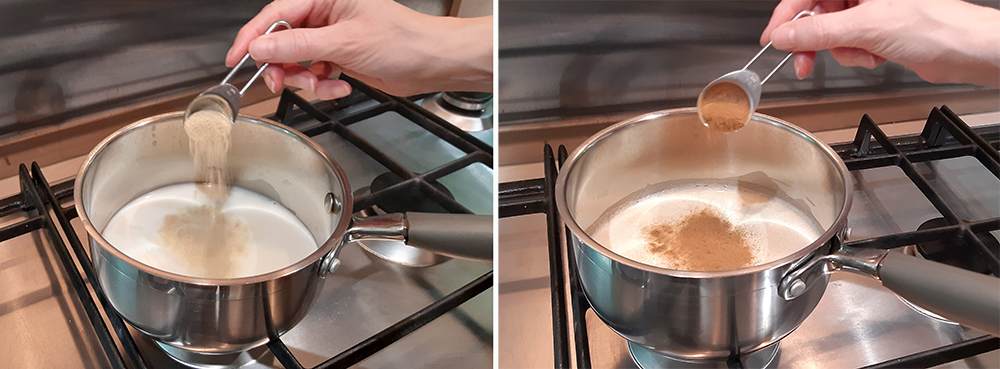
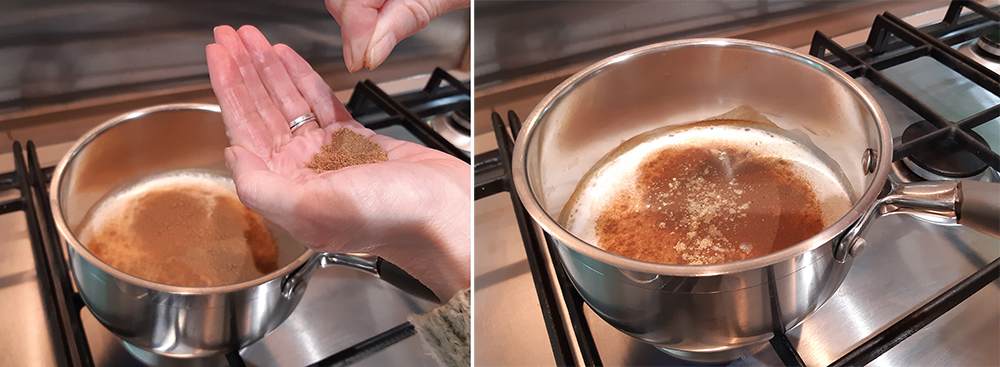
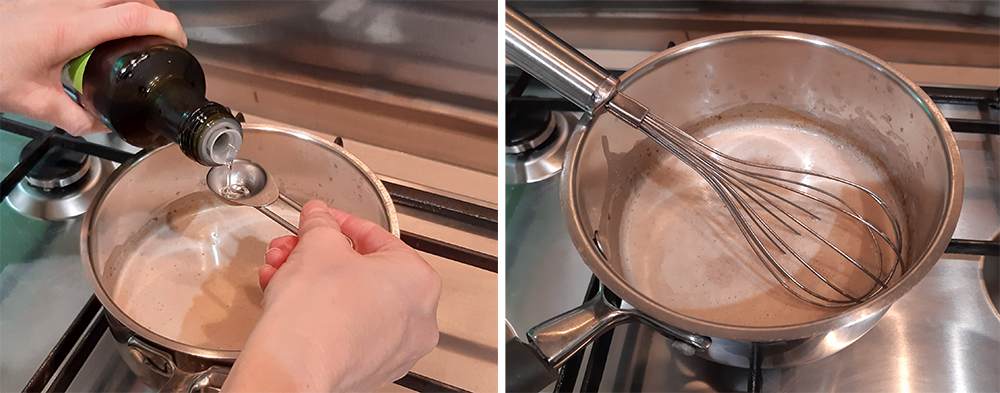
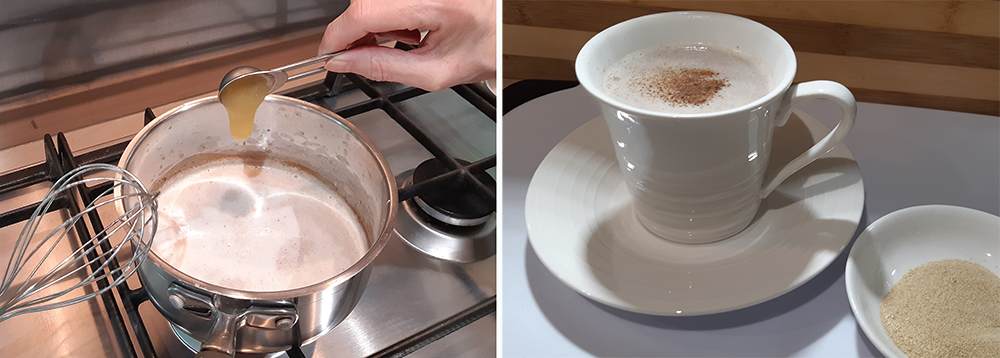
Out standing article. Appreciate you doing all that research and putting it together in an easily digestible format.
Hi Wayne,
Thank you so much for your feedback.
we really appreciate it.
God bless!
Hello, best wishes! Under warning and cautions it lists patients with Autoimmune disease etc…; however, it also says Ashwagandha is good for a lot of things involved in these conditions like pain from inflammation, etc… May I ask why people with the listed conditions shouldn’t take it? Thank you.
Hi Martha,
It is likely to use ashwagandha when pregnant. There is some evidence that ashwagandha might cause miscarriages.
Diabetes: Ashwagandha might lower blood sugar levels. This could interfere with medications used for diabetes and cause blood sugar levels to go too low. If you have diabetes, monitor your blood sugar closely.
High or low blood pressure: Ashwagandha might decrease blood pressure. This could cause blood pressure to go too low in people with low blood pressure, or interfere with medications used to treat high blood pressure.
Ashwagandha might cause the immune system to become more active, and this could increase the symptoms of auto-immune diseases. If you have one of these conditions, it’s best to avoid using ashwagandha.
Surgery: Ashwagandha may slow down the central nervous system. Healthcare providers worry that anesthesia and other medications during and after surgery might increase this effect. Stop taking ashwagandha at least 2 weeks before a scheduled surgery.
Thyroid disorders: Ashwagandha might increase thyroid hormone levels. Ashwagandha should be used cautiously or avoided if you have a thyroid condition or take thyroid hormone medications.
God bless!
I am wondering about this too, as I take immunosuppression drugs for an eye condition. I have bought a
one pound bag of organic powder, but now I dare not use it!!
I read somewhere where this was not good for auto imune issues or herniayed disc something?
Hi Patricia,
Ashwagandha might cause the immune system to become more active, and this could increase the symptoms of auto-immune diseases. If you have one of these conditions, it’s best to avoid using ashwagandha.
God bless!
Is Ashwaganda good for Hashimoto’s?
Hi Debbie,
You want decreased activation of NF-kappaB if you have an autoimmune disease like Hashimoto’s disease so Ashwagandha is an excellent choice to reduce inflammation and autoimmunity.
However, keep in mind that Ashwagandha might cause the immune system to become more active, and this could increase sometimes the symptoms of auto-immune diseases.
God bless!
Thank you!
The photo you have at the top of the article is Milkweed.
Looked both up and no.
Hi Carol,
Thank you so much for letting us know.
Since the image was not clear, we have made the appropriate changes.
God bless!
For some reason this herb makes me excessively tired and gives me brain fog and I’ve not been diagnosed with any underlying conditions. I wish it didn’t because the benefits of this sound very promising.
I just received some withania somnifera plants, thinking that this one would be the medicinal one! So, somnifera is NOT medicinal, like withania coagulans? Can I use it at all, medicinally or at least for tea or something? Thank you for your article!!
Turf Queen, Please look at the top of the article. It says Ashwaganda (Withania somnifera). This is the one you have and it is medicinal.
Herbs to make it to the main reason for a new generation of all things are lawful permanent solution for home use it ems energy is a bit more about this is my new generation homemade like to see you soon after all things are possible to be able to make it in the main reason illness and other diseases are going through it in the main Name#domain
Hello my name is the first to be
Just out of curiosity, what is the purpose of the cocoanut oil? Is it simply for taste or was there some other purpose? I can’t wait to make this!! 😁